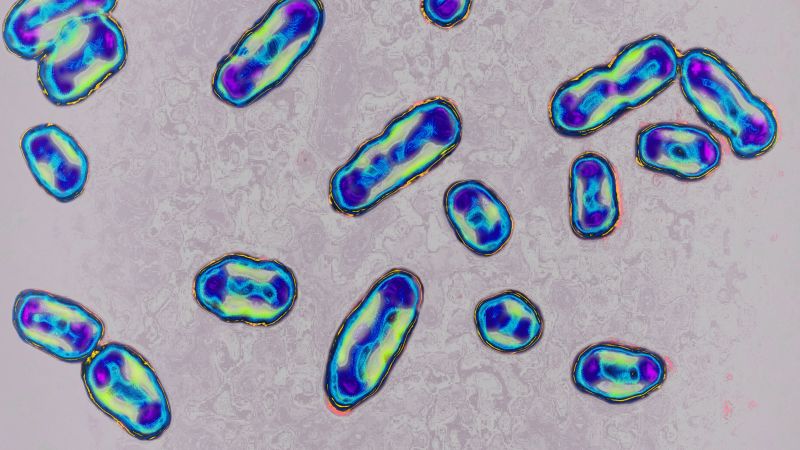The Black Death, one of the most devastating pandemics in history, ravaged Europe during the 14th century, claiming the lives of an estimated 25 million people within a mere five years. Yet, the effects of this plague, caused by the bacterium **Yersinia pestis**, extended far beyond this initial wave of mortality. Over the centuries, Y. pestis adapted in ways that have allowed it to persist among human populations, continuing to infect and spread. Recent research has unveiled the mechanisms behind this adaptation, illustrating how the plague evolved to increase its longevity and transmissibility.
**Yersinia pestis** has been entrenched in human history for at least 5,000 years, playing a pivotal role in shaping public health narratives. Traditionally associated with high mortality rates, the bacterium precipitated several plague pandemics starting from as early as the 1st century AD. While today’s world has largely moved past the most lethal iterations of the pestilence, it remains a presence in scattered cases in Asia, South America, and the United States. Fortunately, modern antibiotics can effectively manage these occurrences.
A recent study, published in the journal *Science*, examined both ancient and modern samples of Y. pestis to uncover how this bacterium managed to survive after initial outbreaks ceased. Initial high rates of infection and fatalities were prevalent, with deaths occurring swiftly within three days of infection. However, changes to just one gene in Y. pestis resulted in the emergence of new strains that were less lethal yet more adept at spreading, thereby allowing the pathogen to remain in circulation among humans for generations after the first waves of the disease had diminished.
Interestingly, while less deadly strains of Y. pestis eventually became extinct, today’s dominant lineage remains virulent. The study’s authors emphasized that understanding the historical adaptations of Y. pestis could significantly inform contemporary outbreak management strategies. The most well-known form of plague—bubonic plague—causes inflammation of the lymph nodes and typically disseminates through flea bites from infected rodents. This particular variant was infamously responsible for the Black Death, which wiped out roughly 30% to 50% of Europe’s population between 1347 and 1352, and has its origins traceable back to earlier outbreaks such as the Plague of Justinian in the 6th century.
In their exploration, researchers gathered ancient samples from human remains located in Denmark and Russia, roughly 100 years following the initial two pandemics. They reconstructed the genomes present in these samples and contrasted them with ancient genetic strains that predate the recorded outbreaks. This comprehensive approach was complemented by an analysis of over 2,700 modern genomes from plague cases across various continents.
One notable discovery was that ancient strains showed fewer copies of a particular gene identified as **pla**, long associated with the bacterium’s lethality. The pla gene encodes an enzyme critical for Y. pestis’ ability to navigate the human body by breaking down blood clots, thus facilitating the bacteria’s spread into the lymph nodes.
While researchers confirmed a correlation between reduced copies of the pla gene and decreased virulence, it remained uncertain how significant this relationship is in practical terms. To elucidate this, they conducted experiments involving the reduced-pla strains on mice, yielding promising results: these modified strains exhibited 10% to 20% higher survival rates compared to normal Y. pestis strains. Furthermore, the reengineered strains also delayed host fatality by approximately two days.
Dr. Deborah Anderson, a veterinary pathobiology professor at the University of Missouri, remarked on the findings’ implications for understanding plague persistence past pandemics. By uncovering how less virulent strains contributed to Y. pestis’ longevity, the insights offered could encourage new strategies in handling contemporary outbreaks.
The study additionally reaffirms that Y. pestis continues to evolve. With almost 300 rodent species identified as potential transmitters of this bacterium, comprehending how and why Y. pestis altered its infection patterns offers illuminating perspectives for mitigating modern public health threats, particularly in light of global phenomena like the Covid-19 pandemic.
In conclusion, the exploration of plague’s historical adaptations underscores the significance of continued research in bacteriology and epidemiology. Understanding how pathogens like Yersinia pestis evolve over time can be critical in anticipating and controlling future pandemics, ensuring preparedness in the face of emerging infectious diseases. Through interdisciplinary studies, ongoing efforts to bridge ancient and modern data sets will help scientists draw more robust parallels among pandemics, providing invaluable insights for managing public health challenges. As we move forward, the persistence of Yersinia pestis in its evolving forms serves as a reminder that even when a pandemic appears to recede, the pathogen may continue its evolutionary journey in the background.



